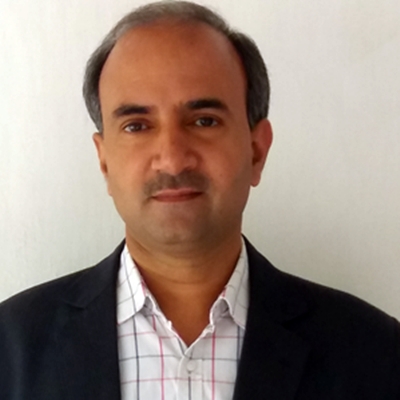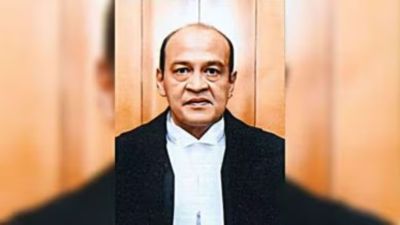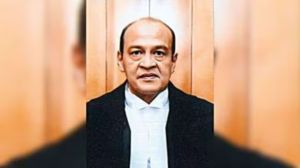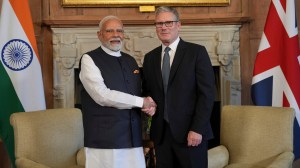In Haryana, consumers to feel pinch as power regulator hikes tariff
Those who consume 251-500 units will now be paying Rs 6.45 per unit instead of the previous tariff of Rs 6.30 per unit
 Those who consume 0-150 units will now pay Rs 2.95 per unit instead of the previous Rs 2.75 per unit. (File Photo)
Those who consume 0-150 units will now pay Rs 2.95 per unit instead of the previous Rs 2.75 per unit. (File Photo)The Haryana power regulator late on Tuesday announced the tariff for 2025-26, effecting a 20 to 30 paise per unit increase in the electricity rates for domestic and industrial consumers. The hike effective from April 1, is the first such increase in the tariff in eight years.
According to a Haryana Electricity Regulatory Commission (HERC) order, signed on March 28 but made public Tuesday, the tariff for domestic consumers has been hiked by 20 paise per unit. Those who consume power in the slab of 0 to 50 units, will now pay Rs 2.20 per unit as against the earlier Rs 2 per unit. Similarly, it would be Rs 2.70 per unit, up from Rs 2.50 per unit, for those who consume 51-100 units of power.
According to an official statement, in FY 2020-21, the tariff for Category-I was reduced from Rs 2.70 per unit to Rs 2 (0-50 units per month) and in case of consumption between 51 units to 100 units, the tariff was reduced from Rs 4.50 per unit to Rs 2.50 per unit, which have now been fixed as Rs 2.20 and Rs 2.70 per unit in the latest order.
“Further, this new tariff structure delivers immediate relief to households by eliminating the burden of Minimum Monthly Charges (MMC). However, a two-part tariff regime has been introduced in which no fixed charges will be levied on domestic consumers having monthly energy consumption up to 300 units. The tariff for Category-I domestic consumers is still one of the lowest among the neighbouring states,” the official statement said.
There are four categories for the consumers who use more than 100 units per month. Those who consume 0-150 units will now pay Rs 2.95 per unit instead of the previous Rs 2.75 per unit.
Those who consume 151-250 units will continue to pay Rs 5.25 per unit. However, those who consume 251-500 units will now be paying Rs 6.45 per unit instead of the previous tariff of Rs 6.30 per unit. Those who consume more than 500 units per month will continue to pay Rs 7.10 per unit.
The power regulator has also added a new category for consumers having a load of more than 5 kilowatts. In the 0 to 500 units category, the rate has been fixed at Rs 6.50 per kWh followed by Rs 7.15 per kWh for 501 to 1,000 units and Rs 7.50 per kWh for more than 1,000 units. Besides, fixed charges amounting to Rs 50 per kilowatt have been imposed in the slab of 301 to 500 and above 500 units.
The tariff has been hiked for the industrial sector too. For the electricity supply at 11 kv, the tariff will now be Rs 6.95 per kvah (kilovolt-ampere hour), up 20 paise from previous 6.65 per kvah. Similarly, fixed charges have also been increased in this category to Rs 290 per kva (kilovolt amperes) per month from previous Rs 165 per kva per month.
To support farmers, the tariff for the agriculture category having metered connection has been reduced by lowering Monthly Minimum Chagres (MMC) from the prevailing tariff of Rs 200 per BHP per year to Rs 180/144 per BHP per year as per the load.
A new tariff slab above 20 kw for Agro Industry/FPO has been introduced to encourage emerging sectors such as mushroom compost and spawn, high-tech hydroponics, high-tech aeroponics, and cold storage.
A hike in the tariff was expected as power distribution companies have been raising the issue of revenue deficit over the past few years. The Uttar Haryana Bijli Vitran Nigam (UHBVN) and the Dakshin Haryana Bijli Vitran Nigam (DHBVN) had earlier sought to raise a revenue of Rs 4,520 crore for the financial year 2025-26.
The state had last revised its electricity rates in 2022-23, effecting a 25 paise per unit hike for consumers using up to 150 units.
In a statement, the state government said: “It has been possible because of earnest efforts put in by both the DISCOMS– UHBVN and DHBVN– during the past 10 years. Both the DISCOMs has not only strategically improved the efficiency, but also reduced the ‘aggregate technical and commercial (AT&C) losses from 30 per cent to around 10 per cent during this period. With this, the financial health of both the companies has significantly improved over the past decade. However, due to erratic increase in the fuel charges and other inflationary parameters, the prevailing retail supply tariff schedule has been revised, which is still lower for consumers as compared to the neighbouring states.”
There are 84 lakh electricity consumers in Haryana. While DHBVN caters to 43.57 lakh electricity consumers, UHBVN provides electricity to over 37.39 lakh consumers in the state.













